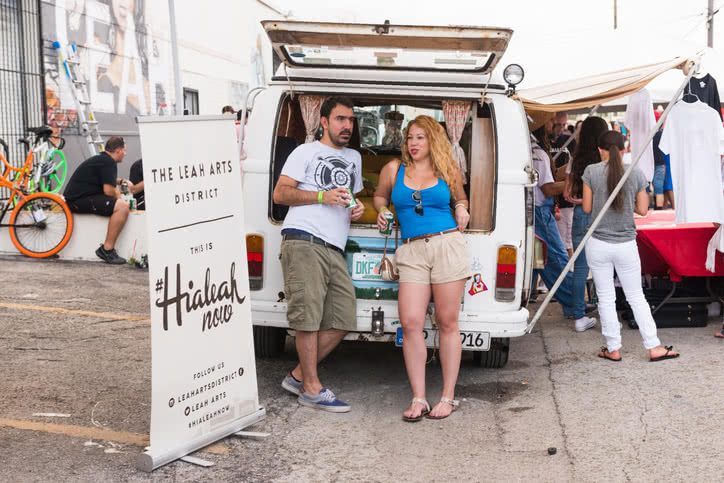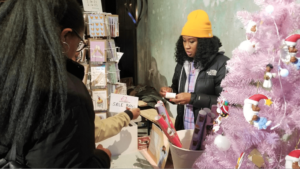A pop-up has the power to take your brand to a whole new audience, as well as your existing fans. To harness this power, however, you need to dedicate sufficient time and budget to promote it.
Whether you’re planning a pop-up shop, bar, restaurant or performance, here are the 10 steps you should take to promote your event and ensure you pull in the punters.
1. Create a Dedicated Event Page
Whether you intend to charge for your event or make it free, you can better manage your pop-up by using a registration system like Eventbrite. Create an event page with all the details about your event and some exciting copy about why people should want to come along. You can customise the page to match your branding and really make it stand out – check out these great examples.
Set up either free or paid-for tickets and select the information you want to obtain from registrants. You can use custom questions to request specific information for your event e.g. for a pop-up restaurant you’ll want details of any special dietary requirements.
Now you have dedicated event page for your pop-up, with a listing in Eventbrite’s event directory and a SEO-friendly URL that will help you be found by people searching for events like yours. Good start!
2. Create Banners for Your Website
Of course, you’ll also want to promote your pop-up event on your own website, so create some striking banners to adorn your pages and link them through to your event registration page. If your site is built in WordPress, you can use a plugin like Custom Banners. You should also design an attractive graphic to insert into your email signature so every single time you send an email you promote your event.
If you want visitors to your website to be able to sign up from there directly, you can use one of Eventbrite’s ticketing widgets. They give you the option to embed ticket forms, your whole event page, an event calendar or event countdown.
3. Get it on Event Listing Websites
Eventbrite is recognised as one of the top 500 domains in the world, so simply by being listed here you can enjoy great visibility. In addition to this, thanks to Eventbrite’s partnership with Evvnt, you can easily expose your pop-up event to thousands more potential customers.
The Evvnt “Broadcast” API enables you to submit your event to up to 130 listing sites in just a few clicks. Evvnt technology works by aligning each event by category and location with its publisher database of over 4,500 publishers. With full reporting, you can monitor activity and see which sites result in the most referrals to your event page.
4. Email or Text Your Database
If you’re lucky enough to already have a database of customers who love your brand, they’ll want to be the first to know about your pop-up event. With Eventbrite’s Email Invitations tool you can upload your email list (i.e. from Outlook or Excel) and send out a notification to everyone.
The invitation will be pre-populated with your event’s details but can also be customised so you can tailor the email body to your audience. Create an air of exclusivity by telling your subscribers they’re the first to know about the pop-up and should grab tickets while they can! You can see stats such as open rate, bounce rate and who converted, in real-time.
If busy inboxes are a concern, you might feel a text message is a better way to get news of your pop-up in front of your customer base. If so, use a service such as EZ Texting to bulk upload customer contact numbers and easily schedule an SMS campaign. If you want to target people who have attended your past events, you can make use of the Eventbrite EZ Texting API to pull in their details.
5. Create an Official Facebook Event
By publishing your event to Facebook through Eventbrite’s “Add to Facebook” tool, an automatic listing will be created for your pop-up on the platform. Official Events contain important details like event date, time and venue, and Facebook will use that to make your event visible to people nearby. Your listing will show up in users’ “Events” dashboards and Facebook might even send a notification to a user if someone they know is attending. In addition, users have the ability to invite friends to your event simply by “adding” them on the event page.
Another major advantage of Facebook Official Events, is they can include the ability to sell tickets from within Facebook, cutting down the steps to conversion. Your event will also be automatically added to your Facebook brand/business page.
6. Use Facebook’s Targeting Capabilities
Once you have your event set up on Facebook, it’s easy to promote it on the platform with paid-for advertising. You can “boost” existing posts or set up adverts with the specific goal of generating ticket sales. It’s a low-cost way to quickly get hundreds or thousands of relevant views and you can limit your daily/weekly spend.
Facebook allows you to target potential attendees quite precisely, so in addition to only targeting people in the location where your pop-up is taking place, you could choose to only show your ad to people with specific interests. Facebook ascertains users’ interests based on their activity online, not just the interests they state on their profiles, making it fairly reliable.
7. Create a Lookalike Audience
Facebook also offers the ability to set up a “Lookalike Audience”. This involves either uploading your customer database or using a list of your existing followers so Facebook can find similar users who match their attributes.
If you have a Facebook advertising campaign running, you can deploy the Lookalike Audience tool using pixel data. You create a pixel in Facebook, copy the code into your Eventbrite account and the pixel will fire every time someone clicks through from your Facebook ad. That means you can take the data of people who have converted and bought tickets and find people similar who might also be interested. Clever stuff! Learn more on this here.
8. Write a Press Release
It’s not all about digital marketing – old school promotion techniques are still valid. Write a great press release and send it to local newspapers, magazines, community sites and radio stations. Bloggers are also a great resource for spreading the word and creating a buzz on social media.
Invite bloggers and journalists to attend the pop-up (give them free tickets if it’s a paid-for event) and you can generate additional coverage afterwards to further promote your brand (and any future events you might hold).
9. Create Some Imagery
Humans are visual creatures, so it will really help generate interest (and secure coverage in publications) if you can include an accompanying image. If you’ve never held your pop-up before, you won’t have event photos but you could have a CGI rendering mocked up. As well as helping with promotion, visually bringing your pop-up design to life pre-event can really assist with the execution.
Alternatively, choose some stock photography and create a composite image to reflect the flavour of your event or have an attractive graphic designed – this could be the same as the one you use for your event page header.
10. Share Content on Social Media
Because they seem more spontaneous than regular events, pop-ups always seem to get people talking. Capitalise on this by being highly visible on social platforms. We’ve found that on average, each Facebook share about your event leads to an additional £3.15 in revenue.
Regularly post about your pop-up and keep sharing your event in your followers’ news feeds. Create teasers in the run up about the exciting features at your pop-up, use images and video and create a hashtag. Think about running a competition that people enter by “liking, sharing and commenting” – these can be hugely effective for increasing exposure.
Conclusion
Just because a pop-up is a one-off, it doesn’t mean you can dispense with a solid sales and marketing strategy. Start far enough in advance and follow these 10 steps and your pop-up can generate long-lasting benefits for your business.





